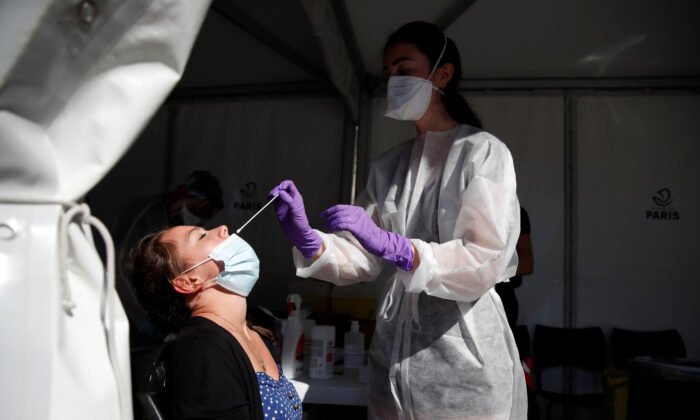WHO Urges Governments to Increase Vaccination Rates to Combat New COVID Surge
‘The perception that COVID is gone is real, but the virus isn’t gone,’ said Dr. Maria Van Kerkhove, the COVID-19 technical lead at the WHO.
COVID-19 is making a concerning comeback, according to World Health Organization (WHO) officials, who warned this week of new waves of infections across the world, while urging governments everywhere to launch new vaccination campaigns to persuade more people to get the shot.
“The perception that COVID is gone is real, but the virus isn’t gone,” Dr. Maria Van Kerkhove, the COVID-19 technical lead at the WHO, told reporters at a press conference in Geneva, Switzerland, on Aug. 6.
Kerkhove said that the health agency’s global surveillance system has detected that infections with SARS-CoV-2 are on the rise and that there’s a risk of potentially more dangerous new variants emerging.
“Data from our sentinel-based surveillance system across 84 countries reports that the percent of positive tests for SARS-CoV-2 has been rising over several weeks,” Kerkhove said. “Overall, test positivity is above 10 percent, but this fluctuates per region.”
In Europe, where the Paris Olympics are being held, COVID-19 percent positivity is above 20 percent, Kerkhove said.
At least 40 Olympic athletes have tested positive for the virus in Paris, per the United Nations (U.N.)-based health agency.
Deaths from COVID-19 have been at their lowest level since the pandemic over the past several months, within a range of 475 deaths to 660 globally per week since April, with no indication of an uptick.
Kerkhove also warned that as the SARS-CoV-2 virus spreads and evolves, there’s a risk that a new mutant version will emerge that defies detection and resists medical interventions, including vaccines.
“If we were to have a variant that would be more severe, then the susceptibility of the at-risk populations to develop severe disease is huge,” Kerkhove said.
She said the WHO is urging governments around the world to launch campaigns to persuade more of their citizens to get vaccinated. In particular, she said at-risk groups should get the shot at least once every 12 months.
Health officials continue to maintain, however, that the benefits of COVID-19 vaccines outweigh their risks.
Concerns about vaccine efficacy center on the fact that the virus is continuously mutating and that vaccine development targets variants that may already be on the wane when the new shots are rolled out. In June, advisers to the U.S. Food and Drug Administration (FDA) said that it’s time to update the recipe for the vaccine that will be widely used in the fall, targeting a version called JN.1.
The advisers were of the view that, even though there is a newer variant called KP.2 already circulating, JN.1 is a parent variant and so focusing the vaccines to target it, as opposed to the newer version, is better because it’s more likely to offer some cross-protection against various subvariants.
Meanwhile, at the press conference in Geneva, Kerkhove highlighted that vaccine availability has declined over the past year or so as the number of vaccine manufacturers has decreased.
“I am concerned,” Kerkhove said, expressing hope that nasal COVID-19 vaccines, which are still being developed, would be finalized and rolled out quickly.
Kerkhove said that the decline in vaccine coverage over the past two years has been “alarming.”
“This urgently needs to be turned around,” she said.
The WHO official’s remarks about a global uptick in COVID-19 cases comes as data from the Centers for Disease Control and Prevention (CDC) shows that more than two-thirds of all U.S. states are experiencing “high” or “very high” levels of COVID-19 infection.
Just two states—New York and Virginia—are reporting “low” levels of COVID-19, per the CDC map.
For the week that ended on July 27, there were a total of 304 deaths from the virus, per the CDC data.





